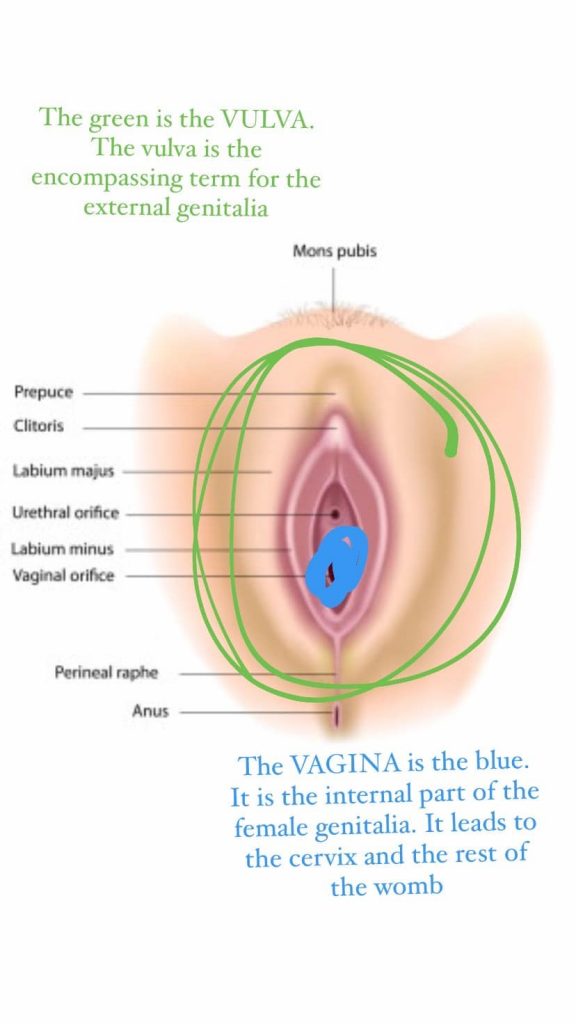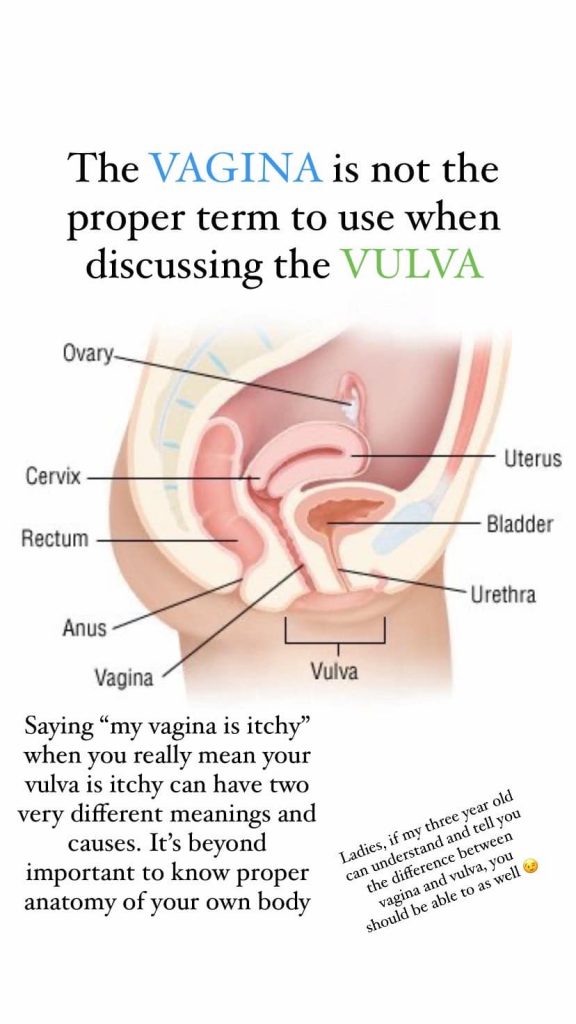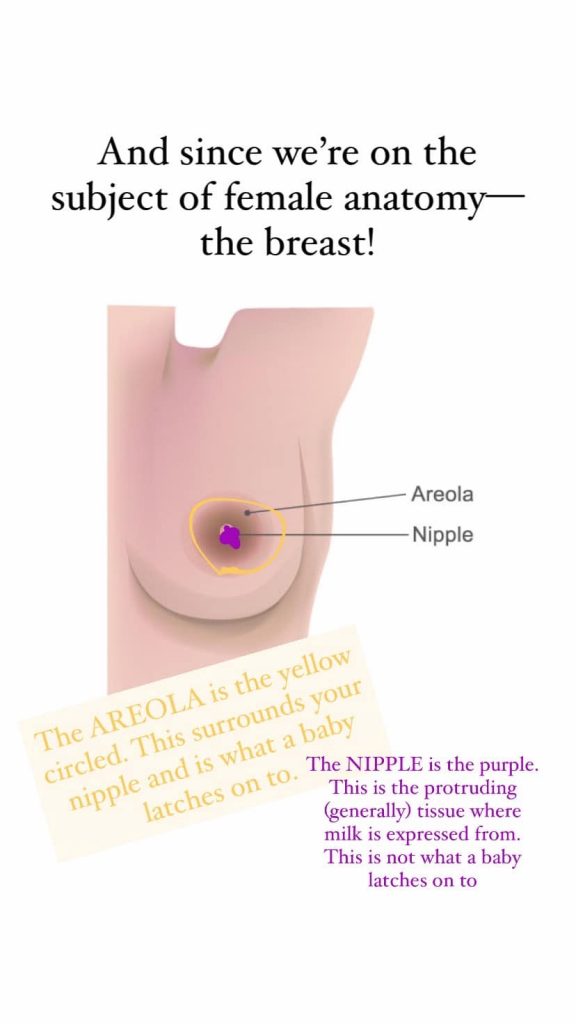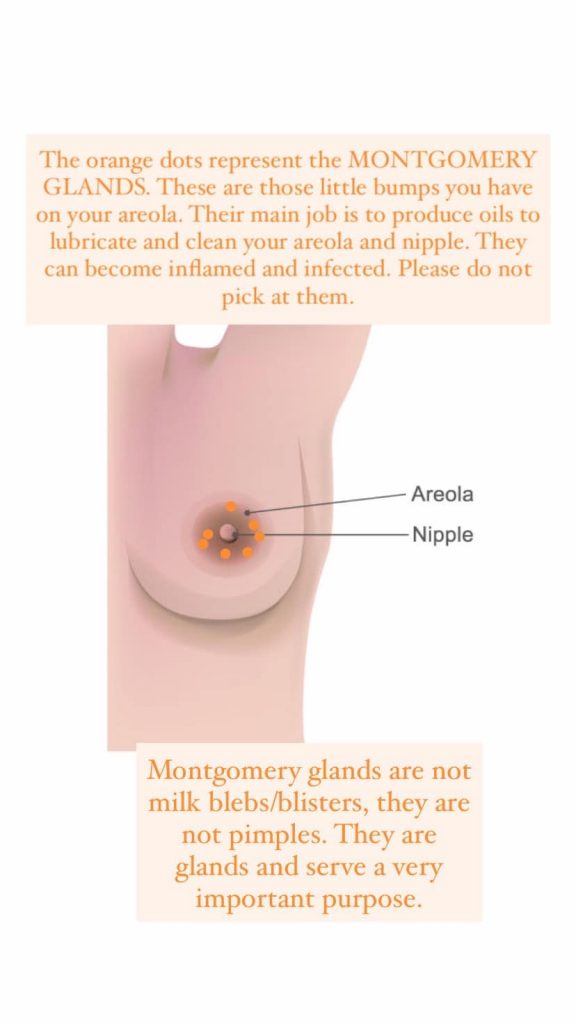
I saw on Instagram the other day an article that claimed millions of women don’t know where their own vagina is located.
I was extremely shocked by this, but also realize I am in a position where I should know a woman’s body because I am a birth worker. I didn’t learn any of this in school during sex ed, which is where most people learn their anatomy. Or, unfortunately, they learn it from adult movies.
Both of which, in my experience, are not the most accurate.
I did post this to my Instagram and Facebook stories, but felt this really needed more. It needed to have a solid permanent place among the internet and among my blog. In this format I can also give a little more information!
I’m also going to give a brief explanation about the external female anatomy of the breast. In my experience as an LC I’ve noticed a lot of women don’t know the anatomy of the breast either, so I’d like to just go over it all very briefly and hope this helps anyone!
In the future I’d love to do another post about the internal workings of breasts as well as the reproductive system, including the clitoris.
When most of us look down at our beautiful lady bits we might think to ourselves, “Yep, that’s my vagina.” In which case we’d be wrong… Unless we had a mirror and a speculum engaged.
Pardon the bad picture, I’m using what I posted to my Instagram stories.
When we look down, we’re seeing our vulva.
The vulva is just an all encompassing term for all of the external genitalia of a biological woman.
The vulva includes the mons pubis, labia minor and majora, the clitoris, the urethra, the perineum, the opening to the vagina, the prepuce– you get the point! Everything you can see basically. The vulva is also what is removed during female circumcision, or more accurately known as “Female Genital Mutilation”. FGM can be the removal of all or some of the vulva. There are four different types I’ll mention very quickly and will link to WHO so you can read more.
-Type 1 removes some or all of the clitoral glans and or prepuce.
-Type 2 is type 1 + the removal of some or all of the labia minora and possibly majora
-Type 3 is, in basic terms, sewing together the labia to close the opening of the vagina. This can also include the removal of the clitoral glans and prepuce.
-Type 4 is any type of harmful procedure to the female genitalia for non medical reasons including burning, scraping, etc.
The vagina is the blue blob in the picture below. The vagina is simply the muscular canal that connects the uterus and cervix to the vulva. That’s all the vagina is! It’s less parts than the vulva, but still extremely important. Although it connects the cervix and uterus to the vulva, the cervix and uterus are not apart of the vagina. They are their own body parts.

As you can see from the picture below, it shows exactly what and where the vagina and vulva are.
So why is this important to know? Why does it matter? Well it matters for SO many reasons. That’s like saying, Why do I need to know where my mouth is? That’s silly right? And we would be beyond shocked if someone didn’t know where their mouth was.
As women it’s important to know where and what our genitalia is so that we can properly advocate for ourselves. As the example says below, saying to our care provider, “my vagina is itchy” when we actually mean, “my vulva is itchy” can lead to two different diagnoses. If your vagina were itchy, perhaps it’s a yeast infection. If your vulva was itchy perhaps its as simple as dry skin or an ingrown hair.
Gentlemen, you should also know where and what female anatomy is. If you are with a female partner, intimately, and she asks for something to be done and you don’t know where that is… Hopefully she will kindly lead you to the correct spot, but imagine her surprise if you know where all of the female parts are. Furthermore, in terms of health, if your female partner came to you concerned about a lump on her vulva and you’re confused about where a vulva is, you might not be able to give the proper support she’s asking for. Besides, ask any woman where the penis, including the shaft and the glans aka head, the testicles, urethra, and prostate are and they will almost 100% be able to tell you where they all are.
As the note at the bottom right says, if my newly 3 year old can tell you the difference between a vulva, vagina, and penis, us as adults should be able to do the same.
Teach kids young about their anatomy, that is for a whole different blog post, but in terms of protecting children from sexual assault is it so important for them to know proper anatomy terms.

Like I said this is just a brief overview! It also doesn’t include things like clitoral anatomy, cervix, uterus, ovaries etc etc. Knowing the basics of your anatomy or your loved ones anatomy is so important. Take charge your body and your health!
And now over to the external breast anatomy. This will be much quicker as it doesn’t include the internal workings of a breast. Again, I’d love to go over that in another blog post!
The areola is the yellow circle in the picture below. On our own bodies it is the pigmented skin around our nipple. Your areola might change colour during pregnancy and this is to help the newborn be able to see and find the breast easier after birth. The areola, though we might think it’s pointless, is not. Other than helping baby find breast, it is also what baby latches on to during breastfeeding. Never should a baby latch onto the nipple. It should always be the areola. Furthermore, the areola is what causes the nipple to become erect upon stimulation.
The nipple detailed in purple in the picture below is where milk is expressed from. The nipple will have varying amounts of holes for milk to be expressed from varying from four to twenty. And yes before you ask, nipple piercings are generally fine when it comes to breastfeeding. Obviously you will have to remove the jewelry, but the holes just add two more spots for milk to be expressed from.

Let’s continue on about the breast. I’m sure you all have seen those little bumps on your areola. Those little bumps are called Montgomery Glands. The secrete oils to lubricate and clean your areola and nipple. They can become inflamed and infected so care should be taken to not pick at them. A lot of mamas in my experience think they’re pimples or milk blebs and try to remove them. Please do not do this. They are neither. They are part of your anatomy. Whilst pimples can happen anywhere on your breast, milk blebs happen on your nipple. Another reason why it’s super important to know the difference! Telling your LC “I have this weird bump on my nipple” might be a tad more concerning that it actually is because you meant “I have a Montgomery gland that looks a little inflamed.”
Whether it’s a pimple or an inflamed Montgomery gland, please do not pick at it.

I hope this was helpful in some type of way. I hope this helps you better understand the general anatomy of a vulva, vagina and breast. Again, I’d love to post a few other blogs discussing more female anatomy so keep an eye open for that!
With so much love and light,
-Kaylan
Make sure you follow me on all social media!
Facebook I have options for ya 😉
– Birth and Postpartum specifically
– The Apothecary (all about herbs and oils)
– Oakborn in general.
Instagram one and done easy easy 😉
